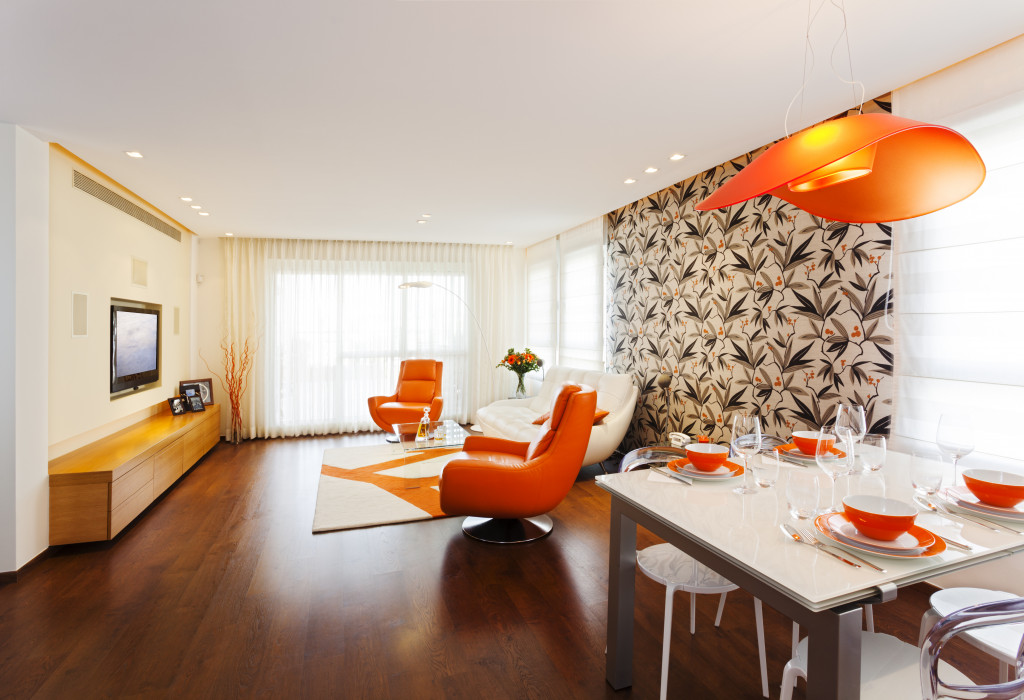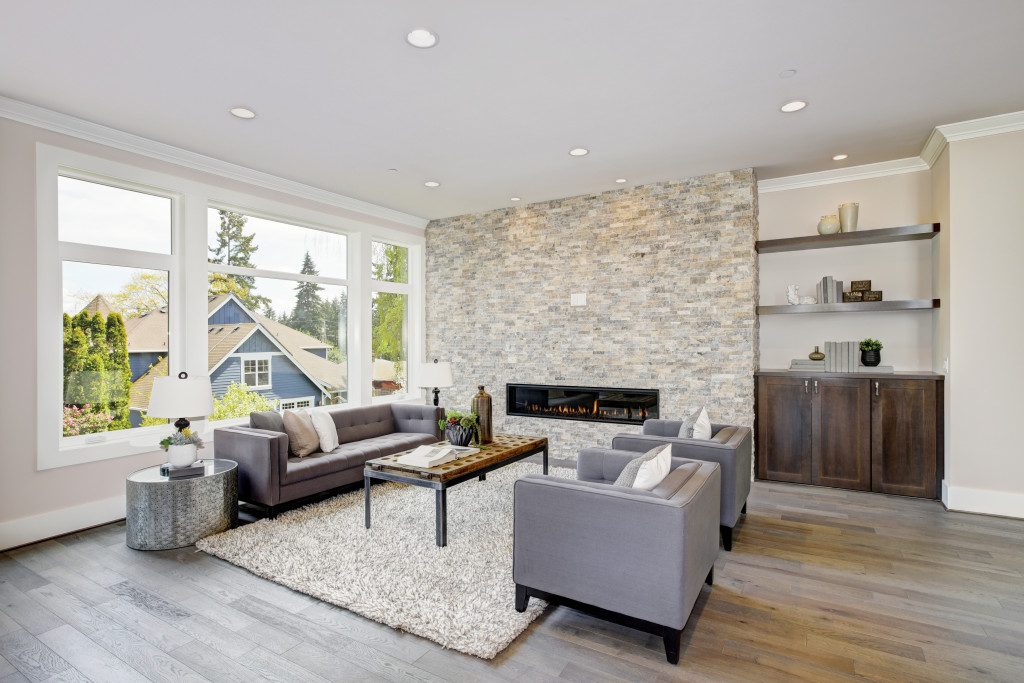Whenever you enter a new home, one of the first things you’ll see is the living room. It’s the heart of the house where guests will be entertained, where family members will sit around to bond, and where the owner can relax. This is why many people put a lot of emphasis on making sure their living rooms are lovely to look at. And one of the best ways to improve a living room is by setting the right kind of mood.
While there are many kinds of moods to choose from, going for a calm and inviting look is at least a safe choice. It lets your guests know that they’re welcome to sit down and a coffee. To help you achieve this, we’ve prepared 4 easy to follow steps.
1. Choose the right color
From the coat of your walls to the furniture you layout, there must be a unifying color scheme. This can seem daunting if you’ve never considered your home’s palette, but it’s actually not that difficult. It helps to limit the number of colors you use. 3 – 5 colors max. For the soothing look, light grays with cool undertones are tried and true classics. You can also aim for something brighter and more nature-oriented, like white walls surrounded by okay browns and green accents.
If you have items in your living room that clash with the color scheme you’re going for, it might be better to move them to another room. A set of bright red chairs will stick out when placed inside a room full of muted blues and grays and whites. Sticking with the color palette of your choice will go a long way to tie the room’s mood together.
2. Decide on lighting sources.
How your living room is lit will define its atmosphere. To make your living room feel really warm and inviting, you have to involve natural light. It can do so much for any space. It can make the room’s color more vivid and the place feel more spacious. To test this, you can use your current windows. See if enough light enters your living room. If not, you might want to add new windows or rethink your current window’s design. You can then consider installing window blinds, shades, or curtains to play around with the amount of light that will enter.
As night sets, a different kind of light has to be used to produce an ambient mood. Electric lights are versatile and give you many options to work with. You can install recessed lights that will highlight a certain part of your room. Pendant lights come in many styles so you can choose designs that would better fit the rest of your furniture. Ceiling lights are the standard because they give off a lot of brightness. You can mix these options to get the kind of atmosphere you’d want at night.

3. Map the space you’ll use
There is a very real risk of overloading your living room. If you end up buying too many tables and chairs, you could create a space that’s suffocating to look at. You have to be reasonable with the room you have. Know its measurements so you can get a better idea of what can and cannot fit inside of it. Spacing out your furniture can also make your room feel bigger than it actually is. If your sofa or bookshelf are placed vertically against your wall, it could give the impression that you have two smaller spaces instead of a single big one. Your guests or family members will be more at ease if they believe they’re in a larger room.
4. Be smart with your furniture
A great way to avoid overcrowding your living room would be to focus on essential furniture like a sofa, a table, and some chairs. Your sofa will guide you with how the rest of your furniture should be. A long sofa will need a rectangular or oval table, while a short one can be complemented by a square or circular table. Your chairs’ colors and textures should also be close to what your sofa has. This’ll bring a stronger sense of cohesion to your living room.
It’s also important to remember that your furniture has to blend in with the colors of walls and benefit from the lighting you’ve chosen. Adding a rug under your table can also help tie in the palette you’re aiming for. If there’s more than enough space left in your room, you can consider adding an entertainment system or shelves as long as they don’t stop the place from looking as spacious and light as possible.
A final word
There’s no denying that the living room is one of the most important spaces in your house. By following these steps, you should be able to make that room as relaxing and calming as possible.

